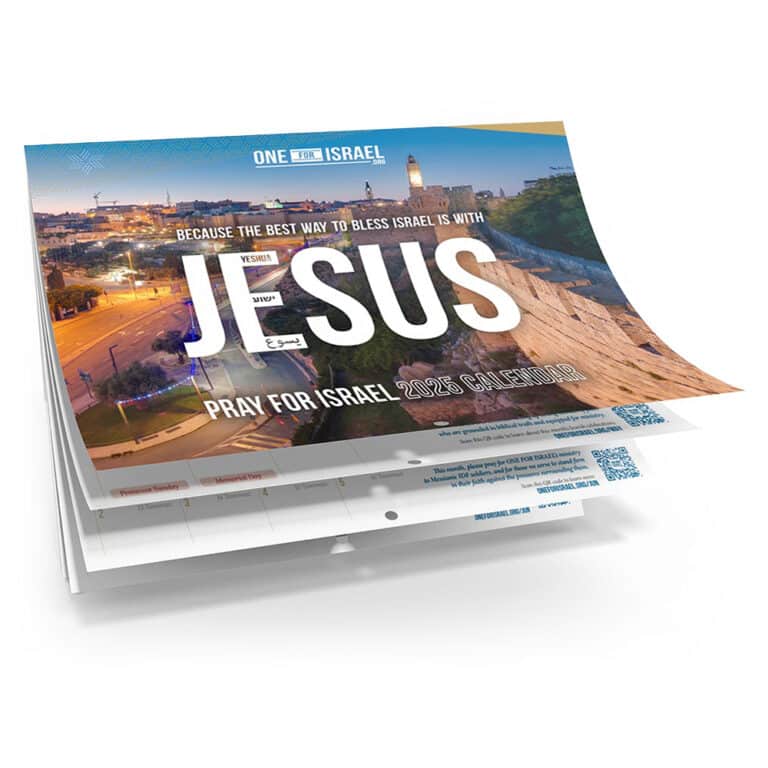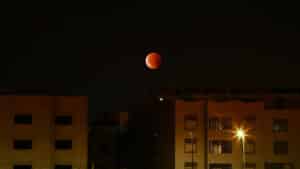Shemini Atzeret is translated as the Eighth Day of the Assembly. It’s sort of strange that there’s an eighth day of the assembly, given that Sukkot is a week-long feast, but in the very passage that dictates there are seven days of Sukkot, we see God also mandating the eighth day:
“For seven days you are to bring an offering by fire to Adonai. The eighth day will be a holy convocation to you, and you are to bring an offering by fire to Adonai. It is a solemn assembly—you should do no laborious work.” (Leviticus 23:36)
“So on the fifteenth day of the seventh month, when you have gathered in the fruits of the land, you are to keep the Feast of Adonai for seven days. The first day is to be a Shabbat rest, and the eighth day will also be a Shabbat rest.” (Leviticus 23:39)
The number seven and seventh crops up over and over again multiple times in the instructions regarding Sukkot, but the number eight also has significance, as we shall see as we look at the eighth day of the assembly: Shemini Atzeret.
The true identity of the seventh month
Sukkot, the Feast of Tabernacles, takes place in the seventh month which is now known as Tishrei. The funny thing is that things got majorly switched up in Babylon. An ironic fact, given that babel is the Hebrew word to confuse! The word Tishrei is an ancient Akkadian word from Babylon meaning “beginning”. It was back in Babylon that the Jewish people began to mark their new year as starting in the seventh month of God’s calendar. For this reason, the Feast of Trumpets which is on the first of the seventh month is now usually called Rosh Hashanah instead, which means “Head of the Year”. But it is no such thing. According to God, the beginning of the year starts with the month of Passover in the Spring.
So what is the true significance of the seventh month, if it’s not really the beginning of the year? Clearly it is a very significant month with three major events in it: the Feast of Trumpets on the first day of the month, Yom Kippur on the 10th, and Sukkot on the 15th at the full moon. Plus, the number seven should be catching our attention.
What clues can we find in the Bible?
All the men of Israel assembled themselves to King Solomon at the Feast in the month of Ethanim, which is the seventh month. (1 Kings 8:2)
Back in King Solomon’s time and before the exile, the seventh month was known as Ethanim.
Not Tishrei, which means beginning.
But what does Eithanim mean?
The Hebrew word “eitan” means steady, stable, constant, strong, permanent, like a rock. Eithanim is the plural. Why is it plural? Because the name of the month refers to water, and in Hebrew water is plural, so the adjective matches it.
The name of the month “Eithanim” refers to steadily flowing waters, constant rivers that do not run dry.1
Living Water(s) and Shemini Atzeret
Today in Israel, Shemini Atzeret is also known as Simchat Torah (celebrated on the following day out in the diaspora) in which there is great dancing, jubilation and rejoicing in the street with Torah scrolls. The yearly cycle of reading through the Torah now begins again at the end of Sukkot in accordance with the Babylonian “beginning”. Simchat Torah seems to be a relative latecomer to the party, but back in the time of Jesus, the levity related to water: living water.
Throughout the summer, Jewish prayers include thanksgiving for dew while there is no rain, but at Sukkot it is tradition to start praying for rain in earnest. Water is a big deal in dry, dusty Israel. Water has the power of life and death. Already by the time of Yeshua, it had become tradition on Shemini Atzeret to hold a water libation ceremony at the temple in Jerusalem. Water was drawn and poured lavishly over the altar amid much rejoicing.
Shemini Atzeret is the apex of zeman simchatenu, the season of our joy. In fact, the Talmud goes so far as to say, “He who has not seen the rejoicing at the place of the water-drawing has never seen rejoicing in his life”! (Tractate Sukkah 51a).
John the Apostle tells us that it was in this context, on the last and greatest day of the feast, that Jesus stood up to give this pronouncement:
On the last and greatest day of the Feast, Yeshua stood up and cried out loudly, “If anyone is thirsty, let him come to Me and drink. Whoever believes in Me, as the Scripture says, ‘out of his innermost being will flow rivers of living water.’” (John 7:37-38)
This idea of “living waters” is an important and familiar theme in Scripture (Isa. 55:1, Ezek. 47; Zech. 14:8), and something His Jewish audience would have understood well. As Jesus told the Samaritan woman at the well, He has the ability to give living water that flows and flows forever:
“If you knew the gift of God, and who it is who is saying to you, ‘Give Me a drink,’ you would have asked Him, and He would have given you living water.” (John 4:10)
As we said, water is plural in Hebrew, and living waters are called “Maim Chaim” (מים חיים). Both words are not merely plural, but denote a pair – a pair of gloves, a pair of eyes, a pair of waters (above and below) and a pair of lives (this life and the life to come). The living water Jesus is offering gives life not only here in this temporary world, but also in the world to come.
This takes us back to the reason for Shemini Atzeret, the Eighth Day of the Assembly. Seven is the number of completion, but eight pertains to eternity, and the world to come.
The ultimate celebration of Shemini Atzeret, which comes after the seven days of Sukkot in the seventh month of Eithanim, points us to the eternally flowing water of life that Jesus offered to the Samaritan woman: the eternal joy of life together with Him in the world to come.
“Everyone who drinks from this water will get thirsty again. But whoever drinks of the water that I will give him shall never be thirsty. The water that I give him will become a fountain of water within him, springing up to eternal life!” (John 4:13-14)
Would you like a drink?
Photo by Vishal Banik on Unsplash
















